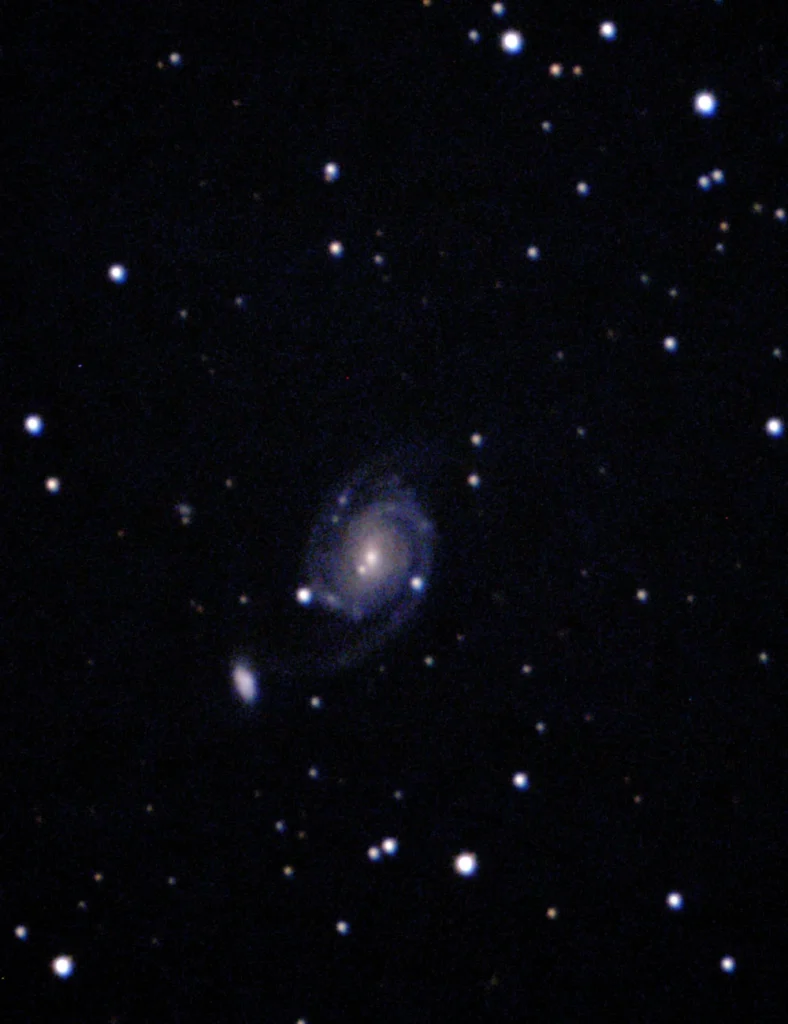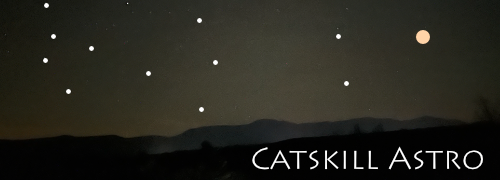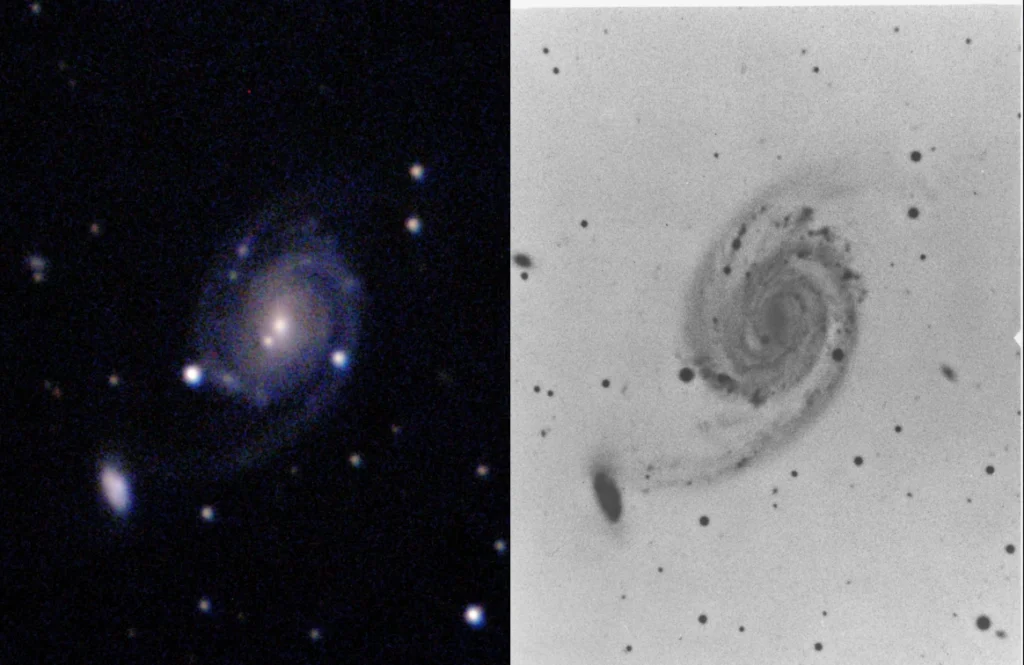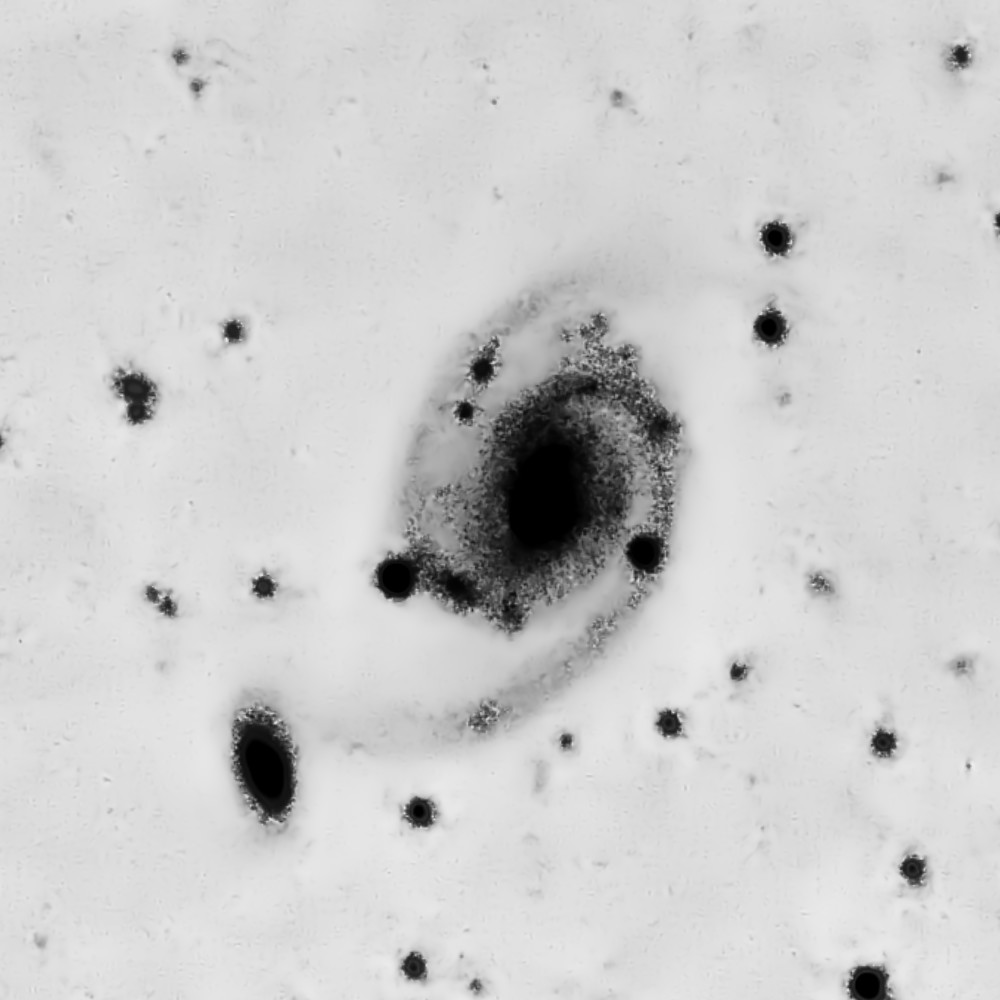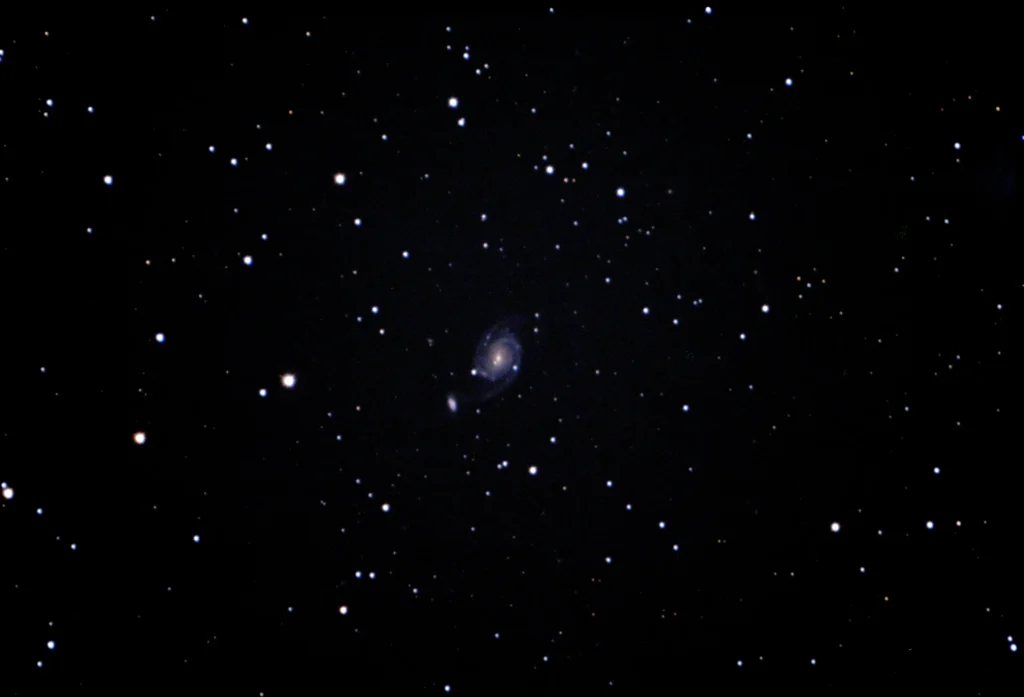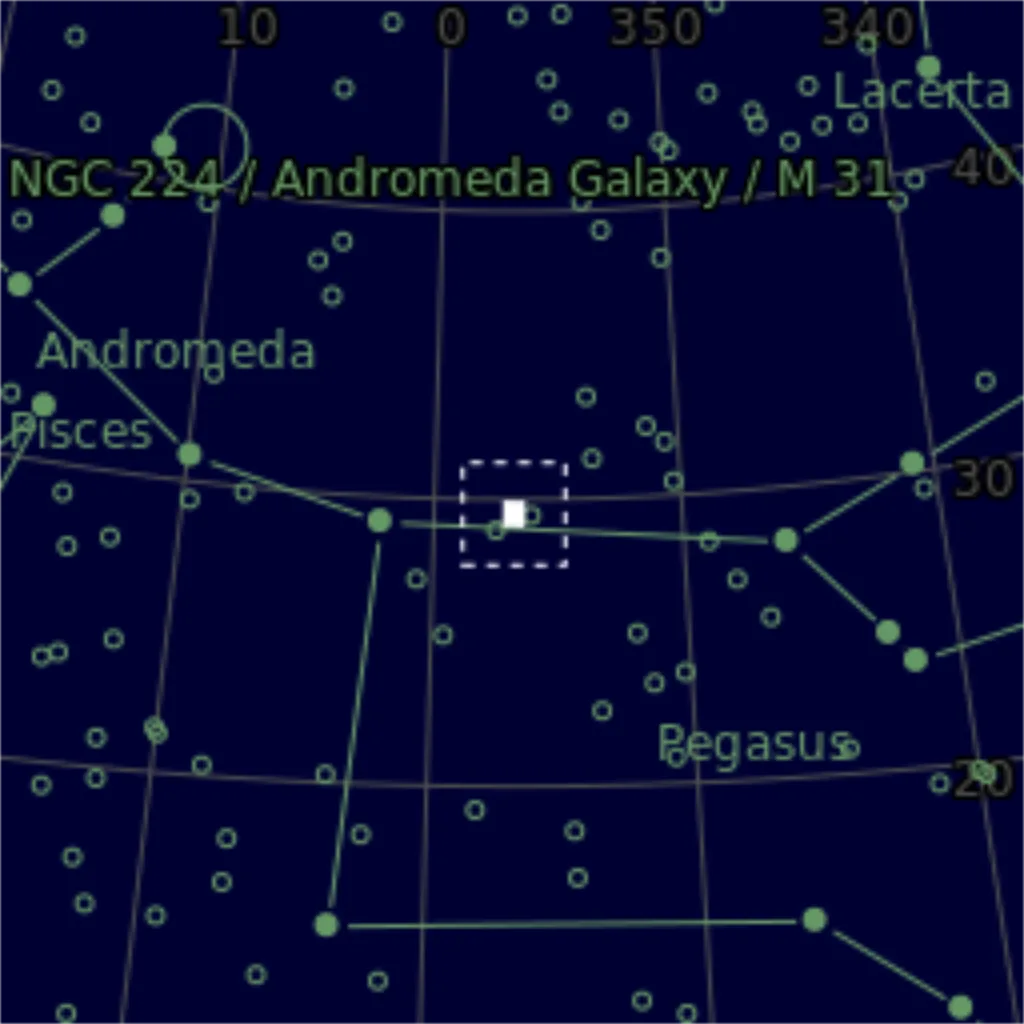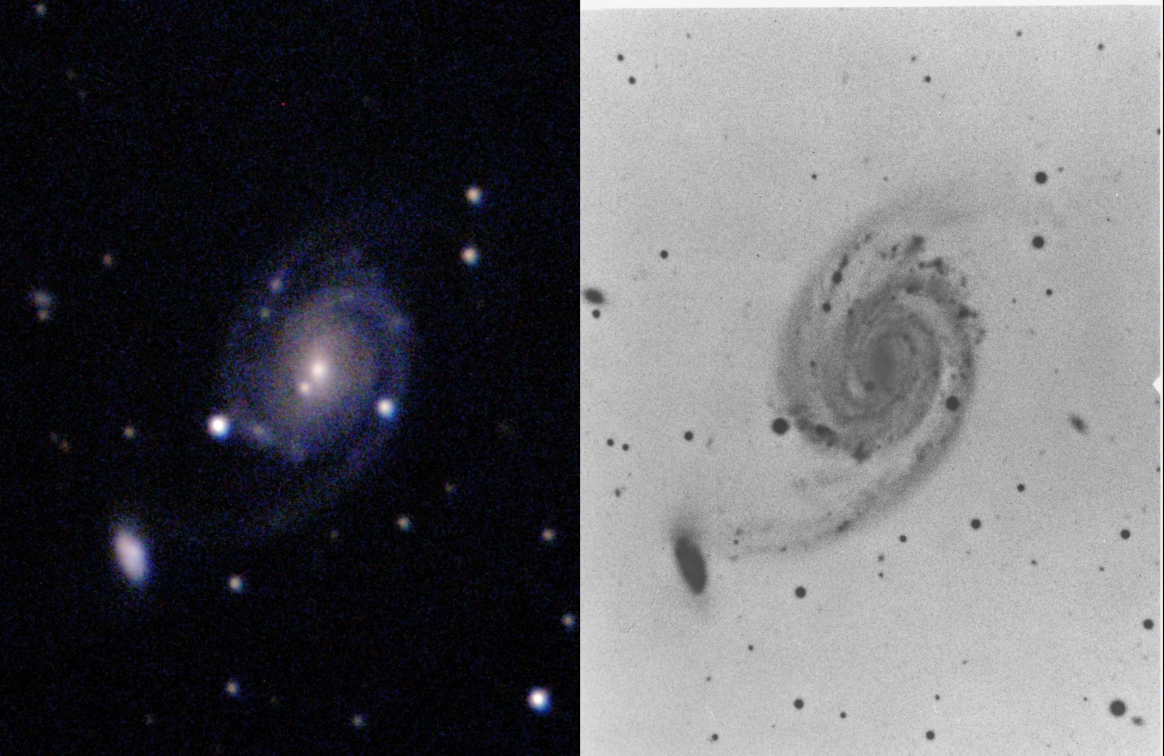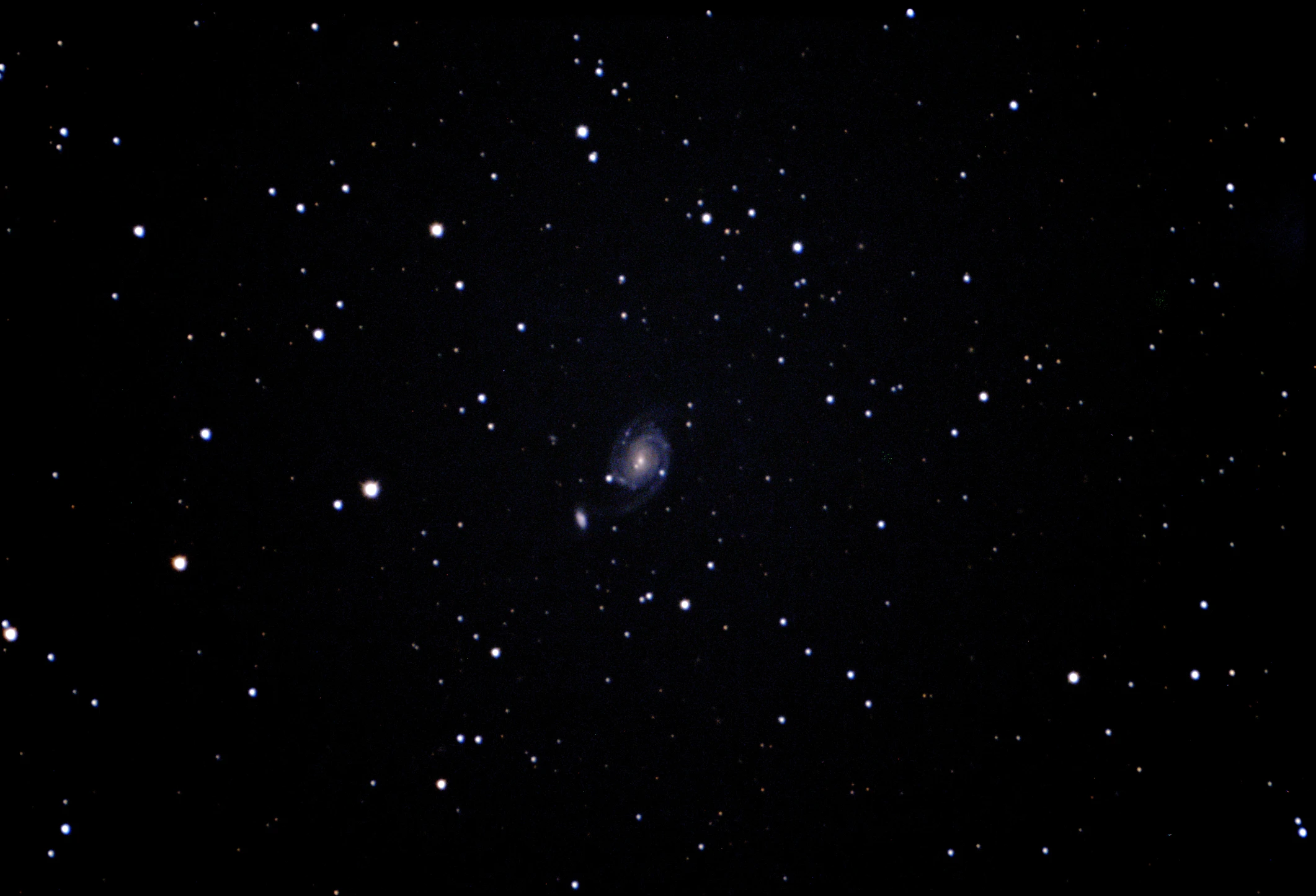| Designation(s) | Arp 86, NGC 7752, NGC 7753 |
| Object Type(s) | Galaxy |
| Relevant Catalog(s) | All (Chron), Arp, NGC |
| Arp Category | Spiral galaxies with large high surface brightness companions on arms |
| Obs. Lat/Long | 42° 17', 073° 57' |
| Constellation | Pegasus |
| Date and Time Observed | 2024-09-02 20:28:00 |
| Instrument | EdgeHD 8" f10-2,032mm FL |
| Camera | ASI294MC-Pro |
| Image Details | Up is 271.2 degrees E of N (i.e. N is right). Total integration time was 40m 30s. Exposures 30s@305g, UV/IR Cut Filter. Darks subtracted, no flats. Dithered and recentered in SharpCap. No guiding. |
| Description | NGC 7753 is a barred spiral galaxy connecting SW (rotate clockwise from N to W) via a large arm/dust lane to a much smaller spiral galaxy NGC 7752. This certainly qualifies as a "high surface brightness" companion. It is, however, the only, obvious bright companion and begs the question why there appear to be two other extended filaments emanating from NGC 7753 (see inverted image in the gallery). Are these filaments explained by low brightness companions? Possibly. One extended filament curves NE (upwards and right) on from the top of 7753's disk towards two bright circles. Those are almost certainly Milky Way field stars, and not involved gravitationally at all. It's possible the upper arm is simply maintaining rotational symmetry with the lower arm ( I don't understand the physics well enough to know if that's possible). Alternatively, there are hints of low surface brightness companions: one located between the two field stars just described, and the other just W (below). In addition, an extremely faint filament continues to the WNW (down and slightly right). This connects to a tiny smudge of a possible galaxy roughly level with the bottom the compact spiral disk of NGC 7753. Visually, the curve is continued by the line of field stars paralleling SW back towards 7752, but I DO NOT believe any continuous filament connects them there. |
| Catalog Links | |
